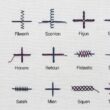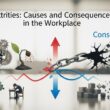Why campaigns fail: poor audience understanding
I’ve seen way too many campaigns crash and burn because of one thing: people don’t actually know who they’re talking to. It’s easy to blame the offer, the creative, or the algorithm, but most of the time, the real issue hides underneath: poor audience understanding.
Think about it. You can’t sell what you don’t understand. Yet most marketers still build campaigns around assumptions. They guess what their ideal customer might want, they rely on surface-level demographics, and they hope for magic. The result? Ad fatigue, wasted spend, and that familiar sinking feeling when a campaign that looked great on paper falls flat in the wild.
When I first started running client campaigns, I made the same mistake. I’d pull together generic “buyer personas” based on gender, age, and a couple of interests. Then I’d launch ads and wait. Some would work by chance, but most didn’t. It wasn’t because the creative sucked – it was because I didn’t truly know who I was talking to or why they should even care.
The ugly truth is that audience research is hard. It’s slow. It’s messy. And in fast-paced marketing, people skip it altogether. But when you skip the research, you skip the foundation. You’re left optimizing for clicks when you should be optimizing for clarity.
The missing link between ICPs and ad content
Even agencies that do create Ideal Customer Profiles still fail at connecting them to execution. I’ve watched teams build beautiful ICP documents with psychographic data, pain points, and brand fit analysis – and then never use them again. They sit in shared folders collecting digital dust.
What usually happens next is chaos. The strategist defines the audience. The copywriter writes from intuition. The designer builds visuals with no context. The media buyer creates ad sets based on performance patterns, not insights. Everyone’s doing their best, but no one’s working from the same truth.
And that’s the missing link: ICPs and creative execution rarely talk to each other. You end up with campaigns that look cohesive on the outside but feel disjointed to the people they’re supposed to convince. That disconnection kills performance faster than any algorithm change.
I remember one project where we nailed the targeting but still tanked performance. After digging, we realized the message spoke to efficiency-driven founders, but our actual audience cared about personal growth and recognition. We hit the right people with the wrong words. It was like speaking perfect English to someone who only responds in Spanish – both sides are right, but they’re not communicating.
What I learned: ICPs mean nothing unless they directly shape what goes into the ad. The bridge between insight and execution has to be instant, or it breaks.
How Elsa AI connects insight generation to creative execution
That’s where tools like Elsa AI flipped my workflow upside down – in a good way. I used to spend entire days turning research notes into usable strategies. Now, that process happens in minutes. Elsa pulls from real behavioral and contextual data, not generic templates. It turns that data into structured insights I can actually use when writing copy, choosing visuals, or testing hooks.
For example, instead of seeing vague notes like “our audience values innovation,” I now get concrete data points: how often they adopt new tools, what pain points they express online, and what phrases they respond to emotionally. Those insights immediately flow into creative ideas.
There’s even a built-in buyer persona creator that organizes audience attributes into motivations, frustrations, and behavioral triggers. The first time I used it, I realized how much I’d been guessing before. It’s not about automating creativity – it’s about grounding it. Every time I open that dashboard, I get a clearer picture of who I’m really building for.
This connection between insight and execution is what most marketers miss. They either overanalyze the data and get stuck, or they skip analysis and overcreate. Elsa bridges the two by keeping the process fast, practical, and grounded in logic instead of hunches.
The 3-step method: discover → define → deploy
Here’s the method I now use for every campaign. It’s simple, but it works.
Step 1: Discover
I start by throwing all the chaos into one place: analytics data, CRM exports, social insights, client notes, ad comments – everything. Instead of manually sifting through spreadsheets, I let the system cluster audiences based on behavior and tone. Suddenly, I see patterns I’d never spot alone. One cluster might care about efficiency; another might crave innovation.
Step 2: Define
Then I define what each audience really needs to hear. Not slogans, but truths. What are they afraid of losing? What dream are they chasing? What words do they use when they talk about the problem? When I understand that, the copy starts writing itself. For instance, when I learned that one audience segment feared “falling behind competitors,” the messaging shifted from “boost performance” to “stay ahead of the curve.” Same product, entirely different emotional pull.
Step 3: Deploy
Finally, I built. Ads, emails, and landing pages – all synced to the personas I just defined. The message, visuals, and targeting align from the start. It’s not about automation replacing the marketer; it’s about automation amplifying focus. I can launch five versions of a campaign before I could’ve finished one before.
The beauty of this workflow is its compounding effect. Each cycle of discovery, definition, and deployment sharpens the next one. Over time, the audience insights become richer, and performance keeps climbing.
Fast, accurate, and scalable strategy creation
Speed without accuracy is chaos. Accuracy without speed is stagnation. The sweet spot is both.
Before integrating AI-driven audience mapping, I used to think fast meant sloppy. I worried that automating insights would water down the nuance. Turns out, it’s the opposite. Machines don’t get tired or biased. They don’t assume. They process everything. And when that data is turned into actionable intelligence, you actually make more human decisions.
Now, I can spin up a complete campaign framework in under an hour – one that’s genuinely based on data, not hope. That means more testing, more learning, and less second-guessing. It also means fewer “Hail Mary” campaigns where everyone hopes something magically works.
Clients notice the difference. When you can show that every ad angle is backed by real audience behavior, trust skyrockets. Internally, my team’s stress dropped too. We spend less time arguing about ideas and more time executing what works.
Scalability used to be my biggest pain point. Adding clients meant adding people, which meant adding chaos. But when the research and strategy layer moves faster than ever, scale becomes effortless. Whether it’s five campaigns or fifty, the process doesn’t break.
Bringing it all together
If there’s one thing I’ve learned, it’s that creativity alone doesn’t win campaigns anymore. Clarity does. The best ads aren’t the prettiest ones – they’re the most aligned ones. They speak directly to people’s fears, goals, and realities because they’re built on truth, not assumptions.
When insight flows straight into execution, strategy stops being a bottleneck. It becomes an engine. You stop reacting and start predicting. And that’s how campaigns go from average to unstoppable.
Most marketers think they need more inspiration. What they really need is better translation between audience data and creative execution. Once you fix that, every campaign feels easier, faster, and way more profitable.
Discover. Define. Deploy. That’s the new rhythm of modern marketing. When you connect data to decisions, you stop guessing and start winning – one campaign at a time.




